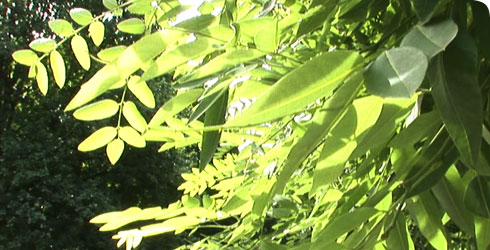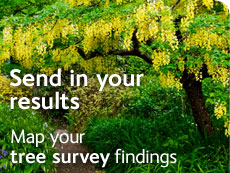Findings so far
Thank you to everyone who has already taken part in the urban tree survey, which is now in its 4th year. By the end of 2012 you had surveyed an amazing 7,282 trees. Here are some of the interesting findings from the trees you've told us about so far.
Please keep surveying. The more trees you can tell us about, the more accurate and useful the data will be.
How your information is helping
Your information is giving us a valuable insight into the urban tree population and its biodiversity. You are creating an important set of baseline data that can be used to see how the urban tree population changes for generations to come.
It will enable Museum scientists to investigate the impact of urbanisation and pollution, disease, climate change and changing fashions in planting.
The top 5 trees recorded
More maple, elm, oak, lime and beech trees have been recorded so far than any other species or group of tree (except cherry trees, which have been the focus of a separate part of the survey each spring). Not surprisingly, these 5 are also among the most well known in the country.
Oaks and maples make it into the top 5 trees recorded in both the north and south. The English oak, Quercus robur, is native to all parts of the British Isles, and maples, both native and introduced, are especially popular in urban areas.
The native field maple, Acer campestre, appears to do better in the south and the hardy sycamore, Acer pseudoplatanus, seems to thrive better in the north of England and Scotland. The sycamore is thought to originate from central and southern Europe and western Asia but was naturalised in the UK several centuries ago.
Read our findings about cherry trees
Trees in the north
So far, rowans, horse chestnuts and hollies have been recorded most in the north.
The native rowan, Sorbus aucuparia, is found in most parts of the British Isles, but prefers cool, moist conditions and suffers in hot summers. The common horse chestnut, Aesculus hippocastanum, was introduced in the 17th century and has spread to all parts of the British Isles and the native holly, Ilex aquifolium, is found everywhere except the far north of Scotland.
Trees in the south
Beeches, limes and elms are dominating the results recorded for the south.
The common beech, Fagus sylvaticus, is native to southeast England and Wales but is widely planted beyond this. It is a popular tree and varieties such as the copper beech and weeping beech are often planted as ornamental trees in parks and gardens.
The most commonly found lime is the European lime, Tilia x europaea, a natural hybrid of 2 other lime species that have lived in the UK for several thousand years. In the 17th and 18th century it was imported from the Netherlands for planting in large gardens and estates. It remains a popular planted tree today and has spread to extend the range of wild limes.
We are working with the Conservation Foundation's Ulmus londinium project to survey London's elm tree population and elms are well represented in the survey results. The English elm, Ulmus procera, was one of the most common UK trees before the arrival of Dutch elm disease in the 1960s. Because it doesn't affect trees until they are about 20 years old, young trees are still relatively common. The hardier wych elm, Ulmus glabra, found further north, is more resistant to the disease.
Find out about the Ulmus londinium project on the Conservation Foundation website
Tree size
The tree with the largest reported girth is a plane tree, Platanus x hispanica, in Mary Magdalene Gardens, Islington, London. Its trunk measures 7.6m.
Girth is determined by the species of tree, its health and age. Other trees reported with large girths include wellingtonias, sweet chestnuts, coast redwoods and white poplars. Trees with the smallest reported girths include blackthorns, spindles, rhododendrons, Himalayan birches and cherry laurels.
Tree height was also well reported but the data is varied, probably because is hard to measure with accuracy and usually estimated.
Least reported trees
Junipers, tamarisks, and service trees are among the least reported trees. Other infrequently reported trees are the non-native Portugal laurel, pride of India, hemlock and evergreen magnolias.
The whereabouts of some introduced species can help shed light on changes in temperature and rainfall, for instance if they come from warmer or drier climates and are appearing increasingly further north. We'd like to encourage people to report these trees so we can get a better picture of where they are growing.
Data collected for the urban tree survey could help us find out if introduced species become more common in the future, or if there is a trend towards planting native species.
Next steps
Please continue to survey trees and send us your results. The more trees we know about, the more we can tell about the make-up of the urban forest now, and how and why it is changing for generations to come.
Remember, every tree counts.


